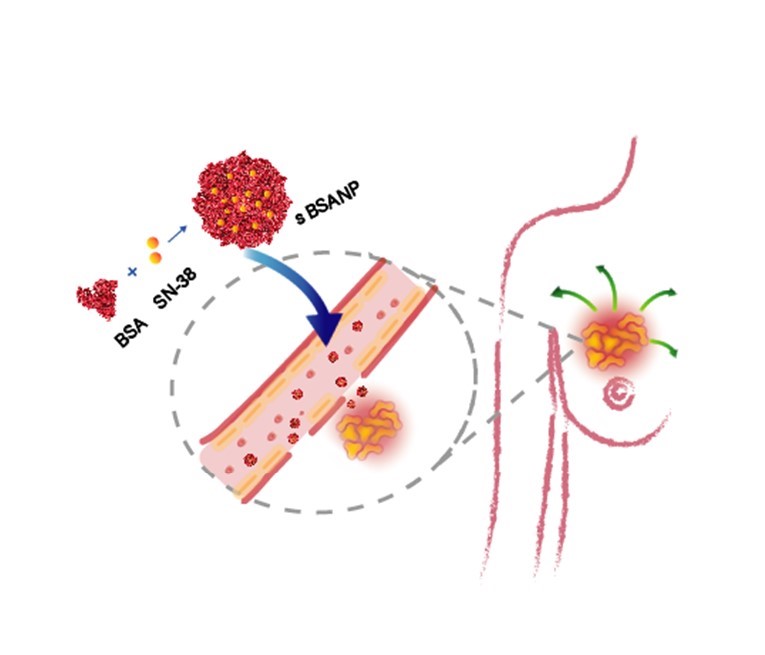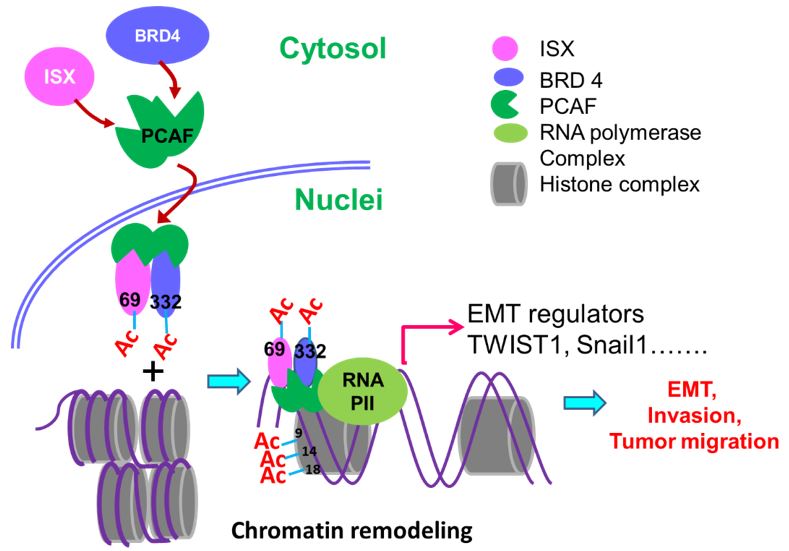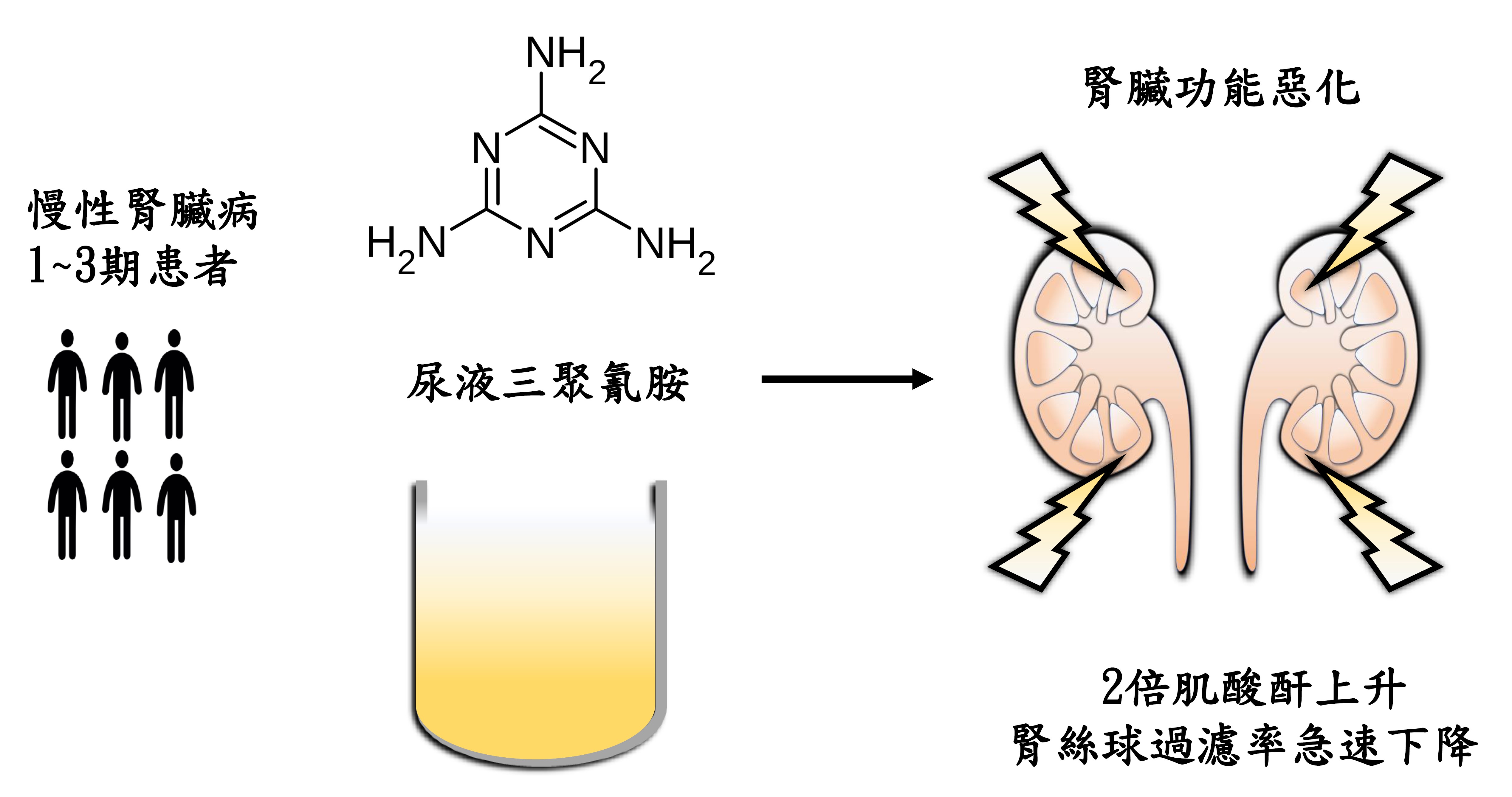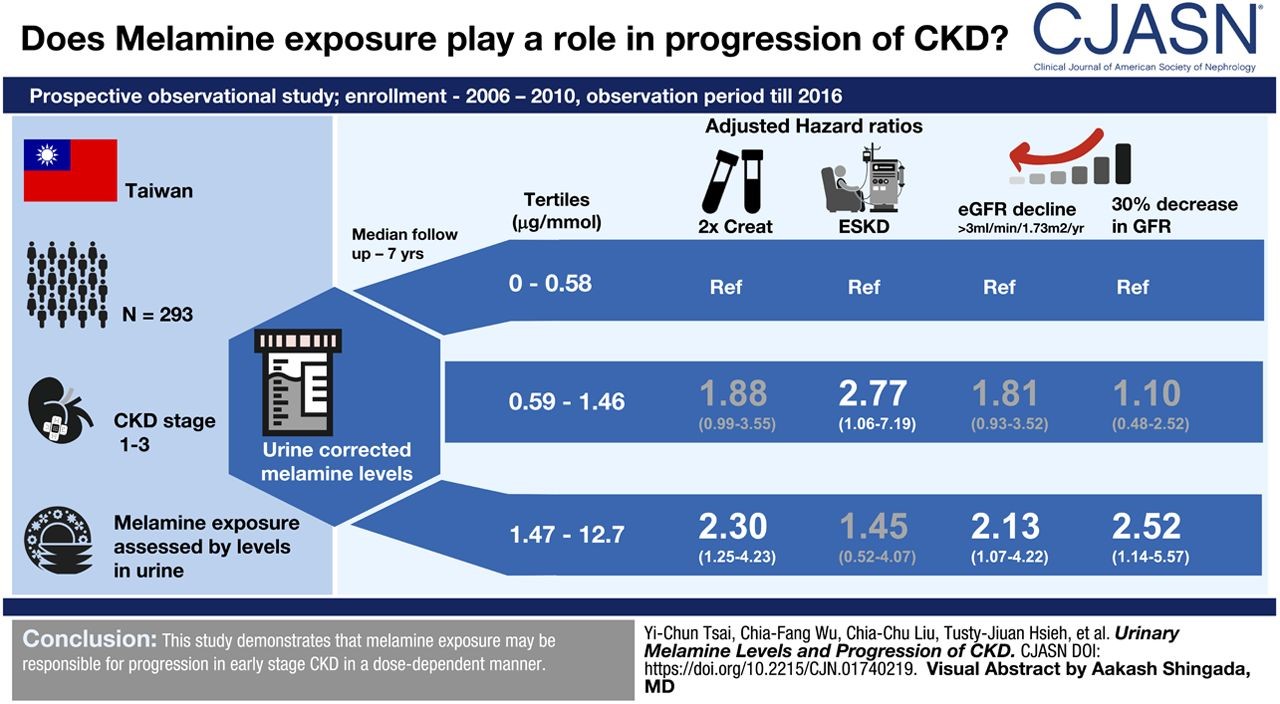
三陰性乳癌新進展-奈米級白蛋白載體新藥
有「乳癌殺手」之稱之三陰性乳癌好發於40歲前,且其來自於名為BRCA-1基因所發生之變異疾病,也是讓女星安潔莉娜裘莉發現自己具有BRCA基因變異後,選擇切除乳房作為預防癌症發生之主因,近年來透過癌細胞基因解密讓乳癌分類更加明朗化,乳癌基因表現大致分為三類:雌激素受體(ER)、黃體素受體(PR)、人類上皮生長受體第二對(HER-2),如癌細胞三種基因表現皆為陰性則歸類為「三陰性乳癌」,目前是臨床上治癒率最低、復發率最高之乳癌類型,導致選用標靶藥物存在諸多限制,病患仍使用化學治療為主。
近日,高雄醫學大學方逸萍副教授及其研究生林欣哲之論文刊登於國際知名藥劑領域期刊,研究中指出「抗癌藥SN-38 白蛋白奈米載體」是針對三陰性乳癌新劑型藥物,SN-38為有強大抗癌活性之喜樹鹼衍生物,但因難溶於水且副作用大等特性限制了其於臨床上之應用;為此,方老師研究團隊藉由研發白蛋白奈米載體結合SN-38之技術克服其於臨床使用限制。白蛋白為人體內生性蛋白所構成,是血漿中最豐富蛋白質、能維持血漿滲透壓、運送血液營養物等,除了是人體中不可或缺之蛋白質外,也容易被代謝且不易致敏,利用白蛋白結構中之親水性及親脂性特質,可有效將SN-38包裹在奈米粒子之間。方老師研究團隊所合成之「抗癌藥SN-38 白蛋白奈米載體」經細胞實驗證實:可有效抑制三陰性乳癌細胞株生長,且白蛋白奈米粒子可增加SN-38進入癌細胞之有效劑量,且SN-38從奈米粒子釋出後更可標靶精準毒殺癌細胞。
乳癌有逐漸年輕化之趨勢,多數年輕患者在發現乳癌當下,家庭與事業皆處於黃金時期,一旦確診三陰性乳癌除了生理上不適,心裡也會帶來諸多壓力,期待新劑型開發能順利進行,未來上市後作為治療三陰性乳癌之新選擇。 
本篇為高雄醫學大學2019年月傑出論文11月份得獎文章,代表作者為藥學系方逸萍副教授。
本校主要研究者之簡介
研究聯繫Email:
ypfang@kmu.edu.tw
期刊出處:
Pharmaceutics 2019, 11, 569
期刊線上參閱網址:
The Progress in Triple Negative Breast Cancer Research Continues: the albumin nano drug carrier
Triple negative breast cancer (TNBC), related to BRCA1 mutation, is an aggressive breast cancer common in female younger than age 40. Potentially being in the TNBC population, the actress Angelina Jolie made the difficult decision to undergo a preventative mastectomy due to the alarming nature of TNBC. Lacking estrogen receptor (ER), progesterone receptor (PR) and HER2 receptor, TNBC has limited options on targeted medications, which results in low survival rate and high recurrence among the breast cancer subtypes.
Recently, Professor Yi-Ping Fang with graduate student Hsin-Che Lin in Kaohsiung Medical University published a research on “anticancer agent SN-38 entrapped albumin nanoparticles to TNBC.” SN-38 is a camptothecin derivative with very potent anticancer effect. The clinical application of SN-38, however, is limited by its low solubility and serious adverse effects. For this reason, Professor Fang’s team proposed a solution to combine SN-38 with albumin carrier, considering albumin is not only one of the most abundant protein in human and maintains osmotic pressure, delivers substances in blood circulation, but also can be easily metabolized and further eliminated. By utilizing the natural amphiphilic property of albumin, Professor Fang’s team developed a procedure to formulate SN-38 in albumin nanoparticles which further showed promising targeting effect by accumulation these albumin nanoparticles in TNBC cell line to suppress TNBC cell line growth.
Upon the trend of younger breast cancer diagnosed such as TNBC in this case, majority of breast cancer patients are at their pinnacle of life and career, and this disease only brings serious distress physically and mentally. Through this research, the contribution to the solution to the unmet TNBC clinical need may be expected, with the ultimate goal in mind, to improve TNBC patients’ quality of life.
This article-“High Potency of SN-38-Loaded Bovine Serum Albumin Nanoparticles Against Triple- Negative Breast Cancer” , written by Rept. Author Associate Professor Yi-Ping Fang from School of Pharmacy, is award for Kaohsiung Medical University 2019 Monthly Excellent Paper Award in Nov.
Main researcher Intro.
Author Email: ypfang@kmu.edu.tw
Paper cited from: Pharmaceutics 2019, 11, 569
Paper online website: https://pubmed.ncbi.nlm.nih.gov/31683822/
在大多數腫瘤所導致的預後不良及相關死亡中,首要原因(90%)是癌症細胞的轉移所導致。儘管有關於癌症轉移的相關研究日益增多,造成腫瘤轉移的作用機制尚不明確。癌症細胞的轉移是一個複雜過程,而癌細胞的上皮-間質特性轉化(EMT)被認為是最初也是至為重要的步驟。儘管許多信息傳遞分子及路徑(例如,PI3K,Snail,HIF1α,和 SIP1)和轉錄因子(TWIST1/ 2, SNAIL1/ 2,ZEB1/ 2,和 FOXC2)被認為是調節及誘導 EMT 發生的主要因子,詳細的調控機制仍是未知。表觀基因調控(Epigenetic regulation)是癌症進展過程中的重要調節過程,特別是蛋白質乙醯化的機制,但是,其潛在機制亦尚未充分了解。
本校醫學研究所許世賢教授利用免疫沉澱法、質譜分析(LC-Mass/Mass)及鄰位連接技術(Proximity Ligation Assay; PLA)等分子生物學技術發現一個新的致癌複合體(ISX-BRD4),此複合體可誘發及參與腫瘤細胞微環境之建構,使腫瘤細胞進行轉移及惡化。箱型基因Intestine -specific homeobox (ISX) 是一個許世賢教授實驗室發現及證實的一個致癌小腸專一性表現之箱型基因,實驗室多年的研究發表中證實此轉錄因子可經由發炎因子(IL-6)所誘發並且高量表現在肝癌細胞及病人組織中。在細胞核中,經由直接結合下游細胞週期因子(cyclin D1)之啟動子,ISX 的表現可調控癌細胞的增生並與病人之生存時間、腫瘤大小及腫瘤期別有著緊密的調控關係。近期研究發現表觀乙醯轉移酶P300 / CBP相關因子(PCAF)可經由調控ISX(K69)與BRD4(K332)複合物之乙醯化,促使ISX-BRD4複合體進入細胞核,與EMT調控基因啟動子結合並進一步乙醯化組織蛋白3(Histone H3; K9, 14, 18),促使染色質雙股結構鬆開,開始EMT相關調控基因轉錄促進癌症轉移。過度表現ISX會增強EMT標記物的表現,包括EMT 調控基因TWIST1,Snail1, Slug, ZEB1和VEGF,以及隨之而來的癌症轉移,但會抑制E-鈣黏著蛋白(E-cadherin)的表現。 在肺癌中,PCAF–ISX–BRD4複合體過度表達與臨床轉移特徵和不良預後呈現高度相關性。這些結果證實,PCAF–ISX–BRD4複合體表現確實加強了EMT信號傳導,並對腫瘤的發生和轉移發揮了調節作用。

論文全文:https://pubmed.ncbi.nlm.nih.gov/31908141/
圖說:根據實驗數據和結構建模的實驗發現,BRD4的BD2域上的酪氨酸(Tyr390)和天冬醯胺(Asn433)殘基是BRD4識別並與ISX的乙酰化賴氨酸(Lys69)結合併促進ISX–BRD4複合物形成所需的關鍵殘基。
本篇為高雄醫學大學2020年月傑出論文2月份得獎文章,代表作者為醫學院醫學研究所許世賢教授。
本校主要研究者之簡介:
許世賢 教授, 高雄醫學大學 醫學研究所
研究聯繫Email:
許世賢教授 (jackhsu@kmu.edu.tw), TEL:07-3121101#2136
期刊出處: EMBO Rep. 2020 Feb 5;21(2):e48795.
研究全文下載:
Cancer directly affects at least one-third of the human population. Despite this extensive research prevalence, the genetic determinants of cancer risk remain largely unknown. Metastasis, a complex, multistep morphogenetic process, refers to the dissemination from a primary tumor mass to distal tissues, with epithelial–mesenchymal transition (EMT) believed to be the initial and vital step. Despite several signaling (e.g., PI3K, snail, HIF1α, and SIP1) and transcriptional (TWIST1/2, SNAIL1/2, ZEB1/2, and FOXC2) factors having been identified as major regulators of EMT, a detailed regulatory mechanism for oncogene-induced EMT has yet to be established. Epigenetic regulation is an important process during cancer progression, however, the underlying mechanisms, particularly those involving protein acetylation, remain to be fully understood. Recently, Prof. Hsu (GIM, KMU) found intestine-specific homeobox (ISX), a newly identified pair-family homeobox transcription factor, is a pro-inflammatory cytokine (IL-6) induced homeobox gene and high expression in hepatoma cells and HCC patients. Through directly regulates downstream cell cycle regulators (cyclin D1 and E2F1), ISX shows high correlation to patient survival time, tumor size, tumor number and progression stage, and accelerated cell proliferation and tumorigenic activity in hepatoma cells which highlights ISX is an important regulator in hepatoma progression with significant potential as a prognostic and therapeutic target in HCC. In addition, the exposure of environmental pollutants will also trigger and exacerbate the occurrence of liver cancer by inducing the ISX and relevant epigenetic genes expression via the function of its upstream regulatory gene-AHR. At the same time, the expression of ISX in HCC cells can also inhibit the host's own immune system through the regulation of immune checkpoint and tryptophan metabolism-related genes to promote the further growth and metastasis of hepatoma cells. Here, we show that P300/CBP-associated factor (PCAF)-dependent acetylation of intestine-specific homeobox (ISX) regulates epithelial-mesenchymal transition (EMT) and promotes cancer metastasis. Mechanistically, PCAF acetylation of ISX at lysine 69 promotes the interaction with acetylated bromodomain-containing protein 4 (BRD4) at lysine 332 in tumor cells, and the translocation of the resulting complex into the nucleus. There, it binds to promoters of EMT genes, where acetylation of histone 3 at lysines 9, 14, and 18 initiates chromatin remodeling and subsequent transcriptional activation. Ectopic ISX expression enhances EMT marker expression, including TWIST1, Snail1, and VEGF, induces cancer metastasis, but suppresses E-cadherin expression. In lung cancer, ectopic expression of PCAF–ISX–BRD4 axis components correlates with clinical metastatic features and poor prognosis. These results suggest that the PCAF–ISX–BRD4 axis mediates EMT signaling and regulates tumor initiation and metastasis.
Full paper linkage: https://pubmed.ncbi.nlm.nih.gov/31908141/

Figure legend: Illustration of experimental data and structure modeling, it is demonstrated that Tyr390 and Asn433 residues on the BD2 domain of BRD4 are critical residues needed for BRD4 to recognize and bind with the acetylated Lys69 of ISX to facilitate the formation of the ISX–BRD4 complex.
Main researcher Intro.
Professor Hsu Shih-Hsien, Graduate Institute of Medicine, College of Medicine, Kaohsiung Medical University, Kaohsiung, Taiwan.
Author Email
Professor Hsu: jackhsu@kmu.edu.tw, TEL:07-3121101#2136
Paper cited from:
EMBO Rep. 2020 Feb 5;21(2):e48795.
Research Paper available online on website:
環境物質-三聚氰胺-會造成慢性腎臟病患者的腎臟急速惡化
慢性腎臟病是一個全球性的公共衛生問題。在台灣,每十人就有一人罹患慢性腎臟病,慢性腎臟病也擠身於台灣人口十大死因之一。腎臟是個沉默的器官,往往發生異常而不自覺,當有明顯症狀時已來到洗腎的十字路口,如何能提早並預防慢性腎臟病的發生及惡化,是政府機關及臨床照護人員努力的方向。造成慢性腎臟病的原因很多,仍有許多未知的病因造成慢性腎臟病的發生,除了糖尿病、高血壓、腎絲球腎炎等常見造成慢性腎臟病的原因外,日常生活接觸到的環境物質也可能誘發慢性腎臟病。
在2008年,中國發生毒奶粉事件,奶粉原料中被添加了三聚氰胺(melamine),造成嬰幼兒們腎結石,進而引發腎衰竭。在日常生活裡,三聚氰胺常被用來做成美耐皿餐具,即所謂的熱塑性塑膠產品,民眾在不知不覺裡食入或是接觸到過多的三聚氰胺,因此蔡宜純醫師、腎臟內科與環境醫學中心合作來探討三聚氰胺和慢性腎臟病預後進展的關聯性。研究團隊對293位早期慢性腎臟病(stage 1~3)進行長達七年的觀察,結果發現尿液三聚氰胺濃度較高的病人其血清肌酸酐較容易上升2倍、腎絲球過濾率下降速率較快,且腎絲球過濾率也容易在兩年內就下降30%。從本研究結果可知慢性腎臟病病人,其尿液三聚氰胺濃度和腎臟功能的快速惡化有顯著相關,尿液三聚氰胺濃度較高的病人有較差的臨床腎臟預後。此研究成果不但提供給政府機關三聚氰胺對腎臟影響的警訊,也提醒民眾減少生活中熱塑性塑膠產品之使用,進而維護腎臟的健康。
論文第一作者是醫學院教授蔡宜純醫師。通訊作者為環境醫學中心吳明蒼教授。感謝高醫附院腎臟內科團隊陳鴻鈞教授、黃尚志教授及邱怡文主任、及環境醫學中心團隊吳佳芳博士、劉家駒教授及謝翠娟副教授的協助。
論文全文: https://cjasn.asnjournals.org/content/14/8/1133.long

圖示來源: https://cjasn.asnjournals.org/content/14/8/1133.long
圖說: 293位早期慢性腎臟病(1~3期)病人,在7年的觀察期中,尿液裡三聚氰胺濃度較高的患者與濃度較低的患者相比,腎臟功能容易快速惡化。
Urinary Melamine Levels and Progression of Chronic Kidney Disease
Chronic Kidney Disease (CKD) is a global public health problem. The etiology of development and progression of early CKD is multifactorial. Some cross-sectional studies have associated environmental melamine exposure with kidney diseases, but evidence is limited. Professor Yi-Chun Tsai and colleagues at Division of Nephrology, Kaohsiung Medical University Hospital, and Research Center for Environmental Medicine, Kaohsiung Medical University demonstrated urinary melamine as a predictor of rapid decline in kidney function in patients with CKD stages 1-3.
This is the first study to find an association between environmental melamine exposure and adverse kidney outcomes in a clinical setting. Over a median follow-up period of 7.0 years, subjects in the highest tertile of urinary melamine level had a 2.30 hazard risk for doubling of serum creatinine, compared to those in the lowest tertile. Similar significant dose-response results were found in estimated glomerular filtration rate (eGFR) decline > 3 ml/min/1.73m2 per year and 30% decline in eGFR in the first two years. Urinary melamine level is significantly associated with kidney function deterioration in early stage CKD patients. Moreover, research team performed subgroup analysis and demonstrated the association between urinary melamine and kidney function deterioration in subjects with baseline eGFR ≥ 45 ml/min/1.73m2 and in subjects with diabetes mellitus.

CKD patients with the highest tertile of urinary melamine was associated with rapid decline in kidney function including doubling of serum creatinine, estimated glomerular filtration rate (eGFR) decline > 3 ml/min/1.73m2 per year and 30% decline in eGFR in the first two years compared to those in the lowest tertile. Figure source was from https://cjasn.asnjournals.org/content/14/8/1133.long
This article-“Urinary Melamine Levels and Progression of Chronic Kidney Disease” , written by Rept. Author Professor Yi-Chun Tsai, from College of Medicine, is award for Kaohsiung Medical University 2019 Monthly Excellent Paper Award in Aug. The authors of this article include Dr. Yi-Chun Tsai and her colleagues at Division of Nephrology, Kaohsiung Medical University Hospital (Dr. Yi-Wen Chiu, Professor Shang-Jyh Hwang, and Professor Dr. Hung-Chun Chen and colleagues at Research Center for Environmental Medicine, Kaohsiung Medical University Hospital (Professor Ming-Tsang Wu, PhD Chia-Fang Wu, Professor Chia-Chu Liu, and Associate Professor Tusty-Jiuan Hsieh).
This study was published online in Clinical Journal of American Society of Nephrology the 7th August 2019. The full research article entitled “ Urinary Melamine Levels and Progression of Chronic Kidney Disease”
is available online through CJASN at https://cjasn.asnjournals.org/content/14/8/1133.long.